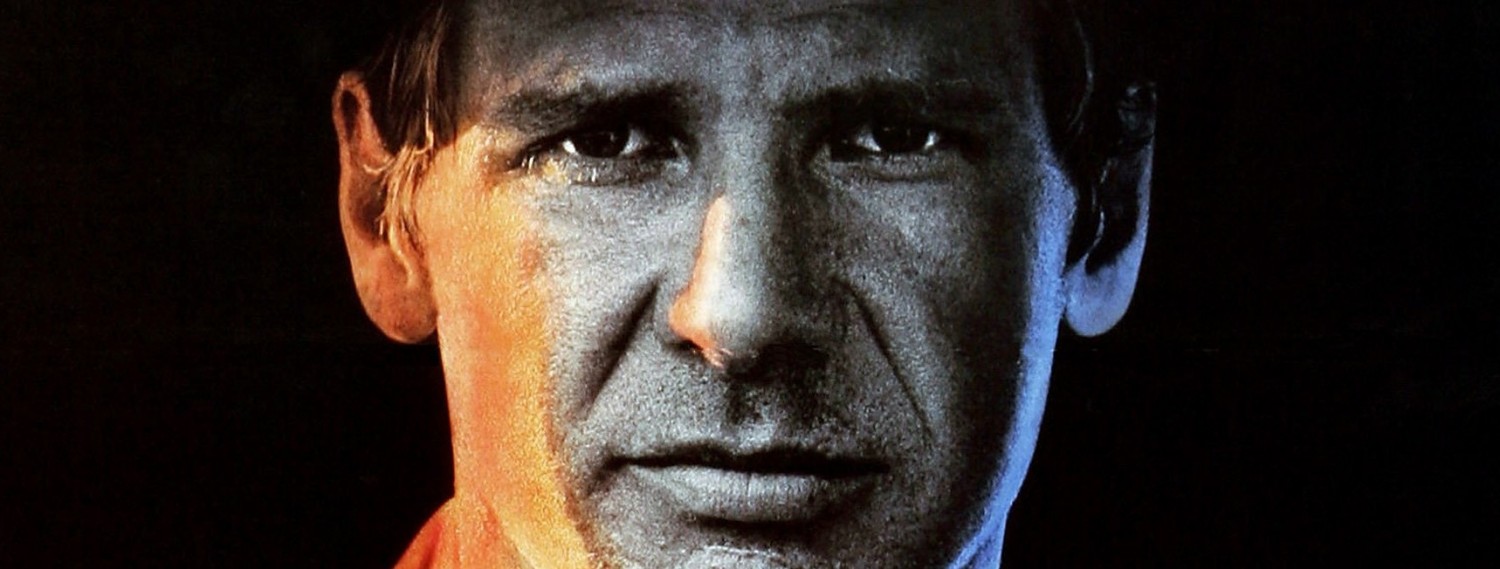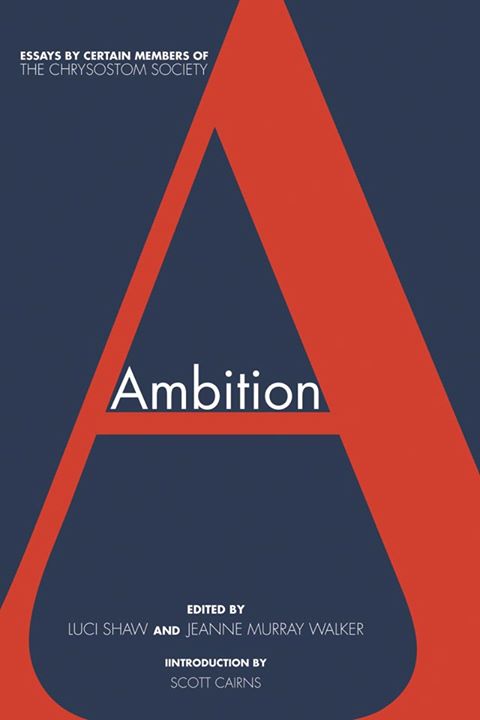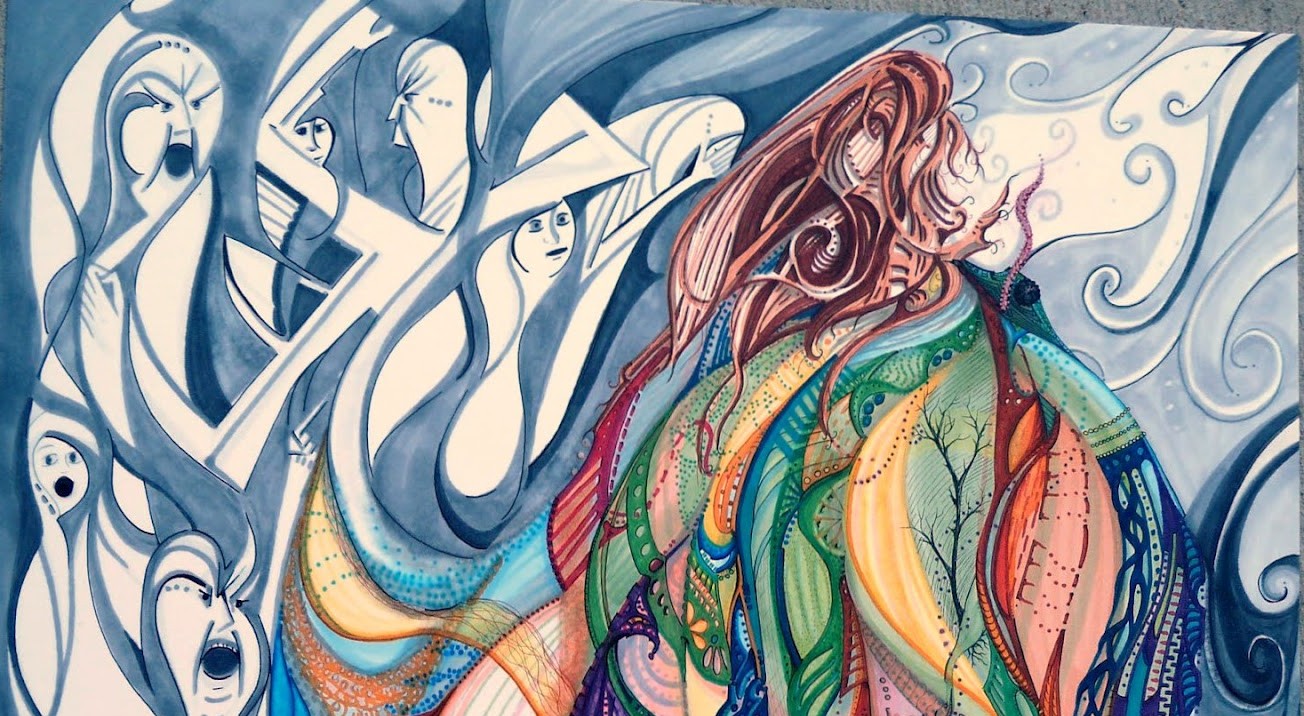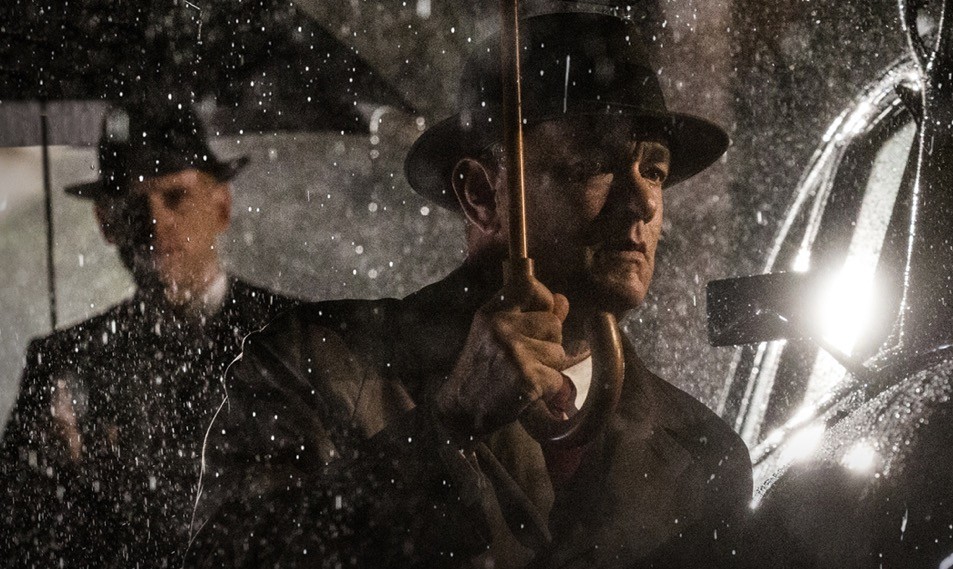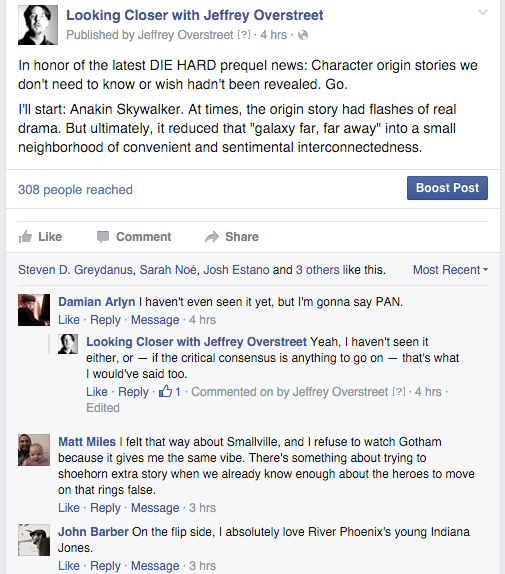Witness: a Looking Closer Exemplar review
Sometimes I come across a review that is so complete, so thorough, and so well-written that it really needs nothing from me but a recommendation. Steven Greydanus's look back at Peter Weir's masterful thriller Witness is one of those.
But never mind: I'm going to do something more than a recommendation. I'm starting a new post tag: Looking Closer Exemplars. What does that mean? It means if I had a book containing one review for every movie, this is — to date — the review I'd pick. I'm gong to be on the lookout for more of these.
With that, I give you over to a reviewer (a key witness, if you will) whose thoughts on film — and many other subjects besides — I will always give close attention. I'm grateful for Steven's work, and even more grateful to call him a friend.
And here's how it starts:
There is not a wasted or unnecessary shot in Peter Weir’s “Witness,” or a superfluous line of dialogue. Like the great barn-raising scene late in the second act, the film’s construction is both efficient and unhurried, functional and beautiful. Like the barn, it is a noble but wistful landmark; there is something defiantly out of step about it, even in the Hollywood landscape of 1985, and certainly today.
Great Scott! 30 years?
I've been resisting the nostalgia-fest that is "Back to the Future Day." Sure, it's a fun movie. And I love Doc Brown. But let's not get carried away.
Nevertheless, this morning when I discovered this, I found myself getting teary-eyed.
https://www.youtube.com/watch?v=Q0VGRlEJewA
Yeah, that's kind of awesome.
Still...
It would be wrong to let this moment pass without a clarification. Some folks are getting "Back to the Future Day" confused with Doc and Marty McFly's 30th anniversary, which was actually back in July.
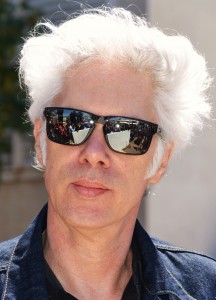 No, the real reason to celebrate a great film's 30th anniversary this month comes from Jim Jarmusch — another mad scientist with wild white hair — who had the inspiration to round up Tom Waits, Rod Lurie, and Roberto Begnini, put them in a jail cell, and start the cameras rolling.
No, the real reason to celebrate a great film's 30th anniversary this month comes from Jim Jarmusch — another mad scientist with wild white hair — who had the inspiration to round up Tom Waits, Rod Lurie, and Roberto Begnini, put them in a jail cell, and start the cameras rolling.
The magic that happened there produced results greater than those of any flux capacitor. I'll never get tired of watching it, quoting it, playing the Tom Waits score, or wondering what those characters are up to today.
Far more than Back to the Future, Down by Law has influenced my imagination and my love for the movies. If I could go back in time and decide which of these movies deserves two sequels, well... no offense, DeLorean fans, I like your movie too. But it's Down by Law ... no question.
https://www.youtube.com/watch?v=fS6Id_TJc6E
If you're unfamiliar with Down by Law, here's what my friend Stef Loy (Persona) wrote about it at Filmsweep:
The title Down By Law can refer to the film's three unique male leads, arrested and dumped in Orleans Parish Prison -- but it can also be street slang referring to the unlikely bond they share when plotting a plan to escape and later roaming free. "Unlikely" because at least two of the men would rather bond with anyone else, but when fleeing they've only got each other, and they're going to need each other to survive. The third guy plays monkey in the middle like the comedic child holding two divorcing parents together.
The story feels built from the foundation of Jarmusch's previous Stranger Than Paradise, released two years before Down By Law. It's shot in a similar black and white style with black cuts between many scenes (but not all), and uses silmilarly subdued characters on the verge of nothingness trying to decipher their roles in life and the bad hands they've been dealt. But the film takes greater risks than Strangers In Paradise in roving cameras and tracking shots, exposing the outer garments of New Orleans in the beginning, and later the area bayou in an alligator infested swamp.
A difference, too, is in the film's use of humor -- where Stranger Than Paradise brought curious and delighted smiles to my face, Down By Law, when settled into the story of three convicts caught and later running together, brought big belly laughs from the pit of my gut -- ironic, since I wouldn't consider this a comedy, but I would be hard pressed to suit it to one genre.
It's about a pimp named Zack, a DJ named Jack, and Roberto Benigni as Bob the Italian (who would have guessed). Bob struggles with English, carrying a pad he scrawls words in wherever he goes, and often confuses Zack for Jack and Jack for Zack. The three are forced to spend time together in a cell, where perhaps none of them should even be: Jack was framed, Zack was set up, and Bob's story of throwing an eight ball and killing a man in self defense is as quirky as he turns out to be. "I ham no criminal," he says, in a thick Italian accent. "I hama good egg."
This was Benigni's first major role, and his comedic presence took Ebert by surprise when writing about the film in '86. This is true Benigni, and if you've seen him and loved him elsewhere, you're sure to fall for him here, too. A jail cell scene where Bob tries desperately to cure his hiccups is quite hilarous, and when he later refers to Walt Whitman's "Leaves of Glass," it's as funny as anything he's done since.
The role of Jack is played by John Lurie (Willie from Stranger Than Paradise), and while I'm new at these Jarmusch films, a quick online scan shows he's in quite a few of the Jarmusch productions. I found him much more believable and approachable in this film.
Tom Waits does double duty providing the musical tracks as well as filling the role of Zack. The DJ can step in front of a mic at a moment's notice and make sense to thousands doing the weather or traffic on the air waves, but he's dumb enough to take a side job driving, getting drunk in the car and failing to check the trunk. He's the greater of the two framed saps, but honestly, if you're hired by a slime ball at $1000 for one drive across the city, it might be a good idea to look in the trunk first. (And not drink when you drive.)
The swampland plays a huge role in the second half when the three stooges escape from jail and wander aimlessly in the muck and woods. I don't know how as children all three dodged the Boy Scouts, but none of them know East from West and they wander in circles like alligator bait.
The final twenty minutes are killer in the most Twilight Zone of ways. No, it's not science fiction. It's much more strange than that. The delicate balance between coincidence and destiny implodes with a comic aura of love, still hanging in the Louisiana air.
Get ambitious. Order now.
Soon, I'm going to give away ALL of these copies of my new favorite book. So stay tuned... details of the giveaways are coming.
Who wrote my new favorite book?
Eugene Peterson, Luci Shaw, Scott Cairns, Jeanne Murray Walker, Gina Ochsner, and Bret Lott... just for starters
Read all about it here. And order now!
The strength of a thread
I've sometimes wondered if I made a mistake by calling my four-book fantasy series The Auralia Thread. Even people who have read the series, and who can remember the names of the individual novels, forget the series name. (Let's not even talk about trying to teach people the term "tetralogy.")
It could have been The Auralia Chronicles. Or The Auralia Saga. Or Tales of the Expanse. Or Beware of Beastmen. Or something hashtaggy and brand-ready like #ColorWorld.
But I called it The Auralia Thread for a reason. And I have a renewed satisfaction in that title thanks to this excerpt from The Faraway Nearby, by Rebecca Solnit, posted on her Facebook page this week:
A thread now most often means a line of conversation via e-mail or other electronic means, but thread must have been an even more compelling metaphor when most people witnessed or did the women’s work that is spinning. It is a mesmerizing art, the spindle revolving below the strong thread that the fingers twist out of the mass of fiber held on an arm or a distaff. The gesture turns the cloudy mass of fiber into lines with which the world can be tied together. Likewise the spinning wheel turns, cyclical time revolving to draw out the linear time of a thread. The verb to spin first meant just this act of making, then evolved to mean anything turning rapidly, and then it came to mean telling a tale. Strands a few inches long twine together into a thread or yarn that can go forever, like words becoming stories. ...
Read the whole excerpt here.
The Auralia Thread. That's my tetralogy's name... and I'm sticking to it.
Woodlawn: A step in the right direction?
So I've already received one note from a fan of so-called "Christian movies" who pointed to some positive reviews of Woodlawn in the mainstream press, and who then implied that this negates my protests about the Christian movie industry. (The Rotten Tomatoes "score" — which is always a dubious generalization — of 100% is based on only seven reviews at this writing.)
She seemed to think that I've been eagerly anticipating bad reviews for this film, and that positive reviews would put me in my place.
Um, no.
Critical acclaim for Woodlawn doesn't mean that critics are starting to see the light when it comes to "Christian movies," or that those of us who are frustrated with the propagandistic and shoddy qualities of that "industry" are all wrong. It just means that Woodlawn may have strengths that previous "Christian movies" didn't — strengths enough to earn a measured recommendation.
Nobody would be more pleased for that to be true than me.
The thing that really surprised me about this note, though, was that this person was suddenly treating the assessments of mainstream film critics as credible — as if the opinions of film journalists might actually mean something.
This same person had brushed off the more negative responses from mainstream film reviewers regarding earlier "Christian movies," calling those reviews nothing more than "anti-Christian bias." What the Tomatometer shows, though, is just the latest clear evidence of what I've been saying all along:
When a film is well-made — even a so-called "Christian movie" — people who recognize competent artistry will call it what it is.
It shouldn't have surprised me. It's a common phenomenon: Moveigoers write critics off as snobs and haters if those critics, with their expertise in the art of cinema, find anything lacking in the films that those moviegoers like. But if the films that those same moviegoers like bring positive reviews, they're quick to embrace and broadcast that critical praise as verification.
Either way, Woodlawn is not the first film made by Christians to earn praise from critics.
It's not even the first film this year to do so — but the others were not marketed to churches or packaged in such as way as to make them look like "a win for the home team," so evangelicals largely ignored them.
Nor is Woodlawn the first well-reviewed film to include blatant representations of the gospel.
You see, it isn't that big-screen representations of the Gospel will be critically rejected. (Selma, anyone? Calvary? Of Gods and Men?) It's just that...
...art is about truth, beauty, and imagination... not message.
Art is about showing a big "What if?" with excellence, not telling "Here's how it is!" with a sledgehammer.
The moment that somebody interrupts artistry to try and "Trojan horse the gospel" on people — that's a real expression, by the way — is the moment that audiences will realize that what looked like a story has turned into a sales pitch. And they'll start to back away.
Based on some of the reviews I've seen, Woodlawn sounds like it has some admirable artfulness to it, artfulness that has been lacking in other films of that "genre." But let's not pretend that our long national nightmare has at last been, um, "left behind." As Kenneth Morefield wrote at Christianity Today, "Jon and Andrew Erwin really are the best thing going in the Christian movie cottage industry. There’s your pull quote, and though it is faint praise, I will stand by it." And Joe Leydon at Variety says that Woodlawn's action and uplift are sustained "until the balance tips rather too blatantly toward the latter during the final minutes."
Personally I'm hoping (and I admit, I'm just a kid with a crazy dream) that Woodlawn will help point moviegoers — especially evangelicals and their often-misguided "Christian movie industry" (Left Behind, Facing the Giants, David and Goliath, Kirk Cameron's Saving Christmas, God's Not Dead) — in a better direction: toward an overdue appreciation of cinema's most poetic religious masterpieces.
Many of those movies have been, and remain — beloved by moviegoers and film scholars, for decades. (You can read about some of them here: the results of a survey about faith-related film hosted by Image.)
Many of those most zealous to invent "Christian movies" haven't taken the time to learn enough about film history and world-class artistry to discover what already exists: cinematic greatness that represents the Gospel, shining, studied, imitated, and revered around the world. Moreover, they've missed one of the most beautiful things about the Gospel: It often manifests itself in the art of their neighbors and the work of other cultures, appearing unrecognized in unfamiliar vocabularies and costumes — profound evidence of the "eternity" that the Scriptures say is written in our hearts.
Collectors: Why do you collect?
With this weekend came came the latest breaking news from the Criterion Collection, and once again my cinephile's heart did its dance of joy.
The announcement came with their semi-annual posting of titles that have been recently given the high-quality Criterion treatment for an upcoming release on blu-ray. Among the honorees on their new calendar are the Coen brothers — at last!
Criterion is producing a special package of Inside Llewyn Davis. Okay, so it's not – in my humble opinion — the Coens' most rewarding screenplay. (If I may be so bold as to suggest it: I'd much prefer to see that tilting "C" imprinted on Raising Arizona, Barton Fink, Miller's Crossing, Fargo, and No Country for Old Men.) But it's impressive for many reasons.
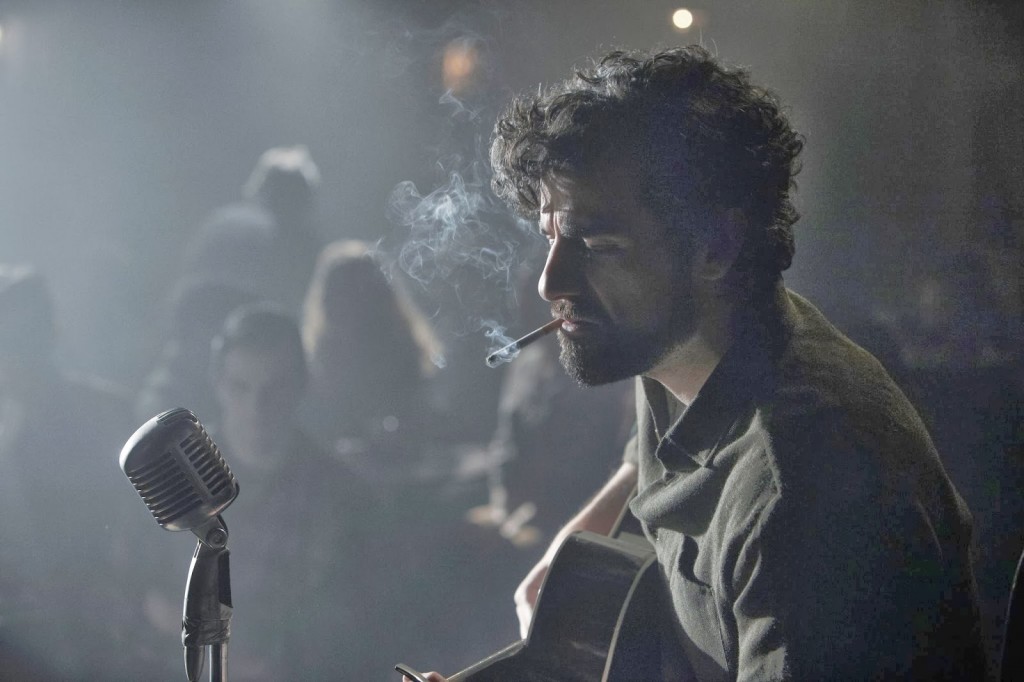 What excites me most about the news is the prospect of a lasting marriage between Criterion and the Coens. Almost all of the Coens' catalogue is worthy of Criterion's extravagant and reverent treatment, and my personal Criterion Collection library will feel more complete with the Coens.
What excites me most about the news is the prospect of a lasting marriage between Criterion and the Coens. Almost all of the Coens' catalogue is worthy of Criterion's extravagant and reverent treatment, and my personal Criterion Collection library will feel more complete with the Coens.
What is more — Criterion is producing a blu-ray of Wim Wenders' classic early work The American Friend, starring Bruno Ganz. I can't wait.
Criterion's treatments of great films honor the work and the artists by helping the world see those visions at their very best, in ideal presentations, and surrounded by extras that help us understand and appreciate them further.
And immediately I wanted to spend more money. To own copies of these high-quality reproductions.
At times, I question this impulse. I'm sure, to some extent, it is the way I have been conditioned by a consumer culture. There is some thrill in believing that, thanks to a Barnes and Noble 50% off sale, I can actually own some of that greatness. And I do feel some pleasure as I see my collection expanding, as my designated Criterion shelves become too small to contain so much goodness.
But then I remind myself that the real satisfaction comes not from the purchase or the product in hand, but in other things: in being able to share those films with others as an act of love; in wrestling with their mysterious contents and then going on to make something of the encounter by writing about it or by making something of my own under their influence.
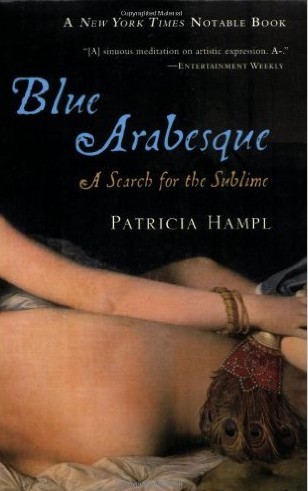 So, after I checked my collector's impulse today for the sake of managing a healthy budget, and sat down to study my MFA homework, I was delighted to come across this passage in my current text: Patricia Hampl's Blue Arabesque.
So, after I checked my collector's impulse today for the sake of managing a healthy budget, and sat down to study my MFA homework, I was delighted to come across this passage in my current text: Patricia Hampl's Blue Arabesque.
It has become one of my favorite memoirs, and one that I hold up as a model for books I'd like to write about cinema and music in the future. It is a study of her peculiar passion for those sensual portraits of nudes reclining on loungers — pictures known as odalisques — painted by Matisse and Delacroix.
Hampl collects prints of these portraits. And her passion for them has led to journeys around the world, to museums and elsewhere, exploring worlds that these paintings have opened up to her.
She writes:
In Baltimore I discovered the amazing cache of loungers, harried by their flowered wallpapers and Moorish screens, in the Cone Collection at the Baltimore Museum of Art. They had been collected by two sisters, Dr. Claribel and Miss Etta Cone, inspired pack rats of modern art, virtuosos of avidity. They collected everything, it seems — including , like Matisse, textiles. “I am beginning the buying all over again,” Dr. Claribel writes to a friend with dismay at her own passion. “How the saris wind themselves about my heart. ‘Throat’ would be better, for they strangle out all other impulses. ... Now that I stop to reason about it, it is silly foolishness, this collecting of things. But it must have some solid foundation — some foundation deep in the hearts of people. … It is the craving for beauty that is such a vital function of the human soul.
So that's why it feels so right. It is an exercise in thirsting for, and then drinking deeply of, beauty.
I like that.
It sounds good, anyway.
Trailermania: Bone Tomahawk & more
Let's check out some new trailers and see how these marketers are trying to win our moviegoing time and dollars...
https://www.youtube.com/watch?v=bvWRilQ9lnI
If I had kids, I just might take them to see this for an afternoon's entertainment. I'm surprised by what seems like a winning sense of humor and a skillful spoof of hero-story tropes and trailer conventions. And even though the character designs rely a little too heavily on Pixar people and The Iron Giant, I'm favorably disposed to it for getting through the whole trailer without a fart, poop, or vomit joke. Oh... wait. Dang. I spoke too soon. (Sigh.)
So? Hmmm. I don't feel like persuading parents against it, but I probably won't go see it.
https://www.youtube.com/watch?v=vniwsss3kks
Trailers are usually designed to make us desire more of what we're seeing. The things this trailer assumes will hook us? A famously glamorous actress. The dramatic potential of guns. A lascivious revelation of sexual abuse happening behind closed doors. The lurid horror of a woman being beaten. An appeal to sentimentality because — awww, shucks, it's her sister! How many movies open every year that use the endangerment of a family member as justification for hero to pick up a gun and try to fix things on their own? (It's an appealing lie — that if we can just get guns into our hands, we're equipped to defend our families and undo injustice. And yet tomorrow's headlines will remind us of what the availability of guns makes possible. You're unlikely to read about any gun owner's heroism.)
So? Ick. No thank you.
https://www.youtube.com/watch?v=0ZbwtHi-KSE
The Searchers. Unforgiven. No Country for Old Men. This trailer is appealing to our admiration for some of the darkest and most unsettling Westerns. I'm intrigued by its cast, but put off by the trailer's excess of gunshots. And that last shot is a cheap choice: Horrify them with a suggestion of rape and they'll line up for tickets! If this turns out to be a character-driven story, it might be something substantial. But if it borrows from better movies to contrive new variations in onscreen violence, it'll be a crime against moviegoers. The movie might turn out to be worthwhile. The trailer starts strong but eventually devolves.
So? I'll read reviews on opening day, but so far I'm more concerned than impressed.
https://www.youtube.com/watch?v=qXAnjA9tAnQ
These people seem real. These characters — and their environments — feel complex, lived-in, full of mysteries and surprises. These scenes feel like they're really happening. Watching them, I feel like a contemplative ghost, respectfully present for private experiences. But then the trailer starts piling on endorsements, flashing festival credits at us, and reminding us that these are accomplished actors. As it does, I fall out of the intrigue that the trailer was developing. Then, there's a line from Rampling that sounds very much like a variation on a key line at the end of Eyes Wide Shut — which makes me wonder if that's deliberate, if this is a sort of Kubrickian meditation on marriage played out by characters who have aged beyond the easy sex appeal of Cruise and Kidman. And then I ask myself: Wouldn't that be a good thing?
So? We don't have enough thoughtful films about what marriage is really about. This looks like a work of art, even if it's a little too eager to announce that it is one. I'm going to plan on seeing it.
Bridge of Spies (2015): A Looking Closer Film Forum
Bridge of Spies is on a long list of films I plan to catch after I meet a bunch of homework deadlines. I'm thrilled to see a Steven Spielberg film drawing such high praise so consistently from sources I find generally reliable.
Have you seen it? Post your thoughts below.
Brian Tallerico at RogerEbert.com writes:
Why was America the best country in the world after World War II? Because we had men like Jim Donovan. And yet Hanks doesn’t overplay that heroism, finding the perfect balance between extraordinary and ordinary person. Spielberg and company even give Donovan a coughing, sneezing cold in the final act, highlighting that this flesh-and-blood man is far from 007.
Hanks is well supported by an equally-great turn from Rylance.
Joshua Rothkopf at Time Out New York raves:
Gifts of civility small and large mark Steven Spielberg's latest film, a deeply satisfying Cold War spy thriller that feels more subdued than usual for the director—even more so than 2012's philosophical Lincoln—but one that shapes up expertly into a John Le Carré–style nail-biter.
...
Bridge of Spies does end up on a bridge of spies, but never mind its more literal moments: Getting to its humane climax of coolheaded diplomacy is, paradoxically, Spielberg's most wily and adult journey since Catch Me If You Can.
Ignatiy Vishnevetsky at The AV Club:
... [E]ven when it errs on the side of the heavy-handed, Spielberg’s direction retains a canvas-like quality. Large chunks of Bridge Of Spies may consist of men sitting and talking in evasive doublespeak, but the movie always articulates itself visually, and its two most suspenseful sequences are both effectively wordless: the opening, in which FBI agents pursue Abel through the streets and subways of late ’50s New York, and the crash of Powers’ U-2 spy plane during a surveillance mission over the Soviet Union. An ode to holding fast to moral principles, geopolitics be damned, becomes a hurrah for old-fashioned big-screen storytelling.
Jackson Cuidon at Christianity Today:
The arc of Bridge of Spies is that Donovan is right, and people don't realize it until after the fact; this is the first act. Then, in the second act, Donovan is right, and people don't realize it until after the fact. Roll credits. Rather than characterizing the difficulty Donovan had in accomplishing his task (aside from a few cases of mistaken identity), the film makes him so resolute, and determined, and relentlessly right (both in the moment and morally), that we lose the ability to relate with him. ... Bridge of Spies offers only the determination — only the high notes, as it were, with none of the lows. And in eliminating the lows, Spielberg mutes our experience of the highs. Bridge of Spies is an amazing technical achievement, and is sure to please any fan of Spielberg, but it lacks the personal spark that makes Spielberg at his best so captivating.
Lost on the Origin Trail...
With the news this week that the next Die Hard movie will be about Young John McClane, we have even more unsettling evidence that any blockbuster action or adventure movie good enough to earn an enthusiastic audience will eventually inspire an expanding mythology that ultimately diminishes the power of the original.
With Joe Wright's Pan turning out to be the travesty that I suspected it would be from the first evidence of its premise, and now the Die Hard franchise — within which all dignity and inspiration died a long time ago — being subjected to new extremes of abuse and absurdity, I asked my Facebook community to draw up a list of the origin stories we wish we'd never heard. They responded impressively.
Do you have any to add to this list? What origin stories have been worth imagining?
Turn it up: 5 new favorites
It's Friday. I have a long paper to write, and a Sunday evening deadline. I'm tired. I need a new heartbeat. And I've found it, thanks to one of my new favorite records of the year: Mbongwana Star's In Kinshasa.
Here's a new video for that song, as well as some more tracks that have recently cause me to play them twice or three times in a row, loudly, on my morning commute. Forgive me, Rush Hour Traffic, for the booming of my subwoofers.
Mbongwana Star, "Kala" from In Kinshasa:
https://www.youtube.com/watch?v=ynLhuiNzCKM
Algiers, "In Parallax" from Algiers:
https://www.youtube.com/watch?v=Tp41W6luehU
Laurel Halo, "Blue Notion" from Remembering Mountains: Unheard Songs by Karen Dalton:
https://www.youtube.com/watch?v=2BBNZIKlMpw
Lord Huron, "Dead Man's Hand" from Strange Trails:
https://www.youtube.com/watch?v=ftmsvioZGL0
Robert Glasper and Harry Belafonte, "Got Over (Live at Capitol Studio / 2014) from Covered:
https://www.youtube.com/watch?v=bKEWjEbv4YU
